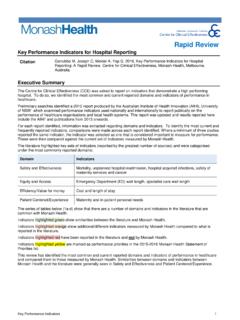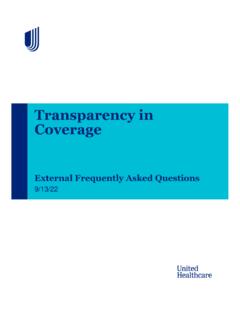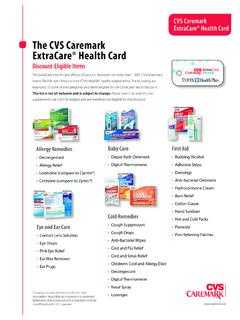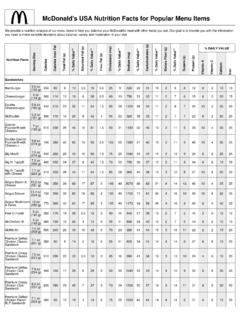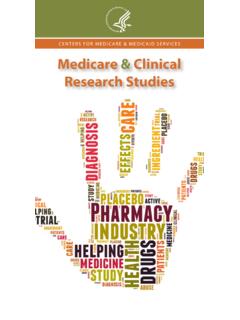Transcription of Deteriorating patients and MET calls - Monash Health
1 Scoping Review Deteriorating patients and MET calls Citation Garrubba M & Joseph C. 2019. Deteriorating patients and MET calls : A scoping review. Centre for Clinical Effectiveness, Monash Health , Melbourne, Australia. Executive Summary Background Medical Emergency Teams (MET) or Rapid Response Teams (RRT) have become a fixed part of the clinical landscape in the majority of adult hospitals throughout Australia [1]. These teams aim to bring critical care expertise to the bedside of clinically Deteriorating patients residing in general hospital wards with the aim of preventing adverse outcomes, in particular death or cardiorespiratory arrests [1]. The Monash Health Deteriorating Patient Committee are currently reviewing performance indicators for Deteriorating patients with particular interest in understanding benchmarks and standards related to MET calls for ward patients as well as the use of MET calls and Rapid Response systems in high risk areas.
2 Objective This Scoping Review was undertaken to answer the following questions: 1. What is current best practice for recognising and responding to Deteriorating patients in high risk areas (ED, Theatre/recovery, and ICU)? 2. What is an acceptable number of MET calls per patient admission? a. What should the baseline expected number of MET calls be (acceptable) on the ward 4-6 hours after being transferred from a high risk area? b. How many is too many? Eg >3 in a 24 hour period per patient? Identifying evidence A search of Google and Medline was undertaken using a combination of relevant search terms for peer reviewed and grey literature published from 2014 onwards. Results A total of 14 national and international grey literature and peer reviewed papers were included in this review. Best practice for recognising and responding to Deteriorating patients in high risk areas Interventions for recognising and responding to Deteriorating patients in high risk areas is not forthcoming in the literature despite known occurrences.
3 The incidence of under reporting of clinical deterioration in ED is reported and studies were identified in both the adult and paediatric high risk settings testing the reliability and usefulness of early warning checklists as a method for predicting clinical deterioration, reducing mortality and length of stay and accurately recording vital signs. What is an acceptable number of MET calls per patient admission? The literature is in agreement that MET calls should be reported as a rate per 1000 admission/separations however, there is inconsistency in the suggested optimal rapid response rates for individual hospitals with reported rates ranging from to 70 per 1000 separations. Conclusion This scoping review was unable to determine current best practice for recognising and responding to Deteriorating patients in high risk areas nor was there a reported expected number of MET calls per patient on the ward 4-6 hours after being transferred from a high risk area.
4 The issue of how many MET calls is too many was difficult to address directly as there appears to be opposing areas of research. One body of research aims for low dose rates indicating that early warning systems are effective and the other aims to show that an increase in MET dose is associated with improved hospital outcomes. Our examination of the literature, while specific to our detailed search questions posed by the requestors mirrors the challenges that are also discussed by others undertaking reviews of rapid response systems. Hillman et al (2014) and White (2015) both maintain the idea that high quality evidence supporting the effectiveness of rapid response systems related to the care of adult patients is lacking and numerous controversies exist as to the optimal methods of implementation. More research is needed in better understanding the strengths and limitations of the different forms of RRT that currently exist, and how they may be reconfigured in optimising patient outcomes, enhancing professional skills and teamwork, and minimising inefficient use of limited resources [1, 2].
5 Deteriorating patients 1. Full Review Background Medical Emergency Teams (MET) or Rapid Response Teams (RRT) have become a fixed part of the clinical landscape in the majority of adult hospitals throughout Australia [1]. These teams aim to bring critical care expertise to the bedside of clinically Deteriorating patients residing in general hospital wards with the aim of preventing adverse outcomes, in particular death or cardiorespiratory arrests [1]. The Monash Health Deteriorating Patient Committee are currently reviewing performance indicators for Deteriorating patients with particular interest in understanding benchmarks and standards related to MET calls for ward patients as well as the use of MET calls and Rapid Response systems in high risk areas. Objectives This Scoping Review was undertaken to answer the following questions: 1. What is current best practice for recognising and responding to Deteriorating patients in high risk areas (ED, Theatre/recovery, ICU)?
6 2. What is an acceptable number of MET calls per patient admission? a. What should the baseline expected number of MET calls be (acceptable) on the ward 4-6 hours after being transferred from a high risk area? b. How many is too many? Eg >3 in a 24 hour period per patient? Identifying evidence Search strategy A search of Google and Medline was undertaken using a combination of relevant search terms (Appendix 1) for peer reviewed and grey literature published from 2014 onwards. Reference chaining was also used to identify relevant papers. Inclusion criteria Q1: Best practice for Deteriorating patients in high risk areas Population Adult and Paediatric population Concept Best practice in recognising and responding to deterioration Context High risk areas only ED, Theatre, Recovery ICU. Types of information Peer reviewed literature, grey literature Timeframe 2014 - current Q2: MET calls per patient admission Population Adult and Paediatric population Concept Benchmarking, indicators, acceptable rates of MET calls per patient Context General ward setting Types of information Peer reviewed literature, grey literature Timeframe 2014 - current Review methodology Due to the emergent and exploratory nature of the questions posed in this review, the search was highly iterative and modified in response to search results and findings from retrieved items.
7 In cases such as these the questions posed by the requestors were used as a compass to guide our searching to help identify the best available and most appropriate evidence to aid decision-making. Deteriorating patients 2. Results A total of 14 papers [1-14] have been included in this scoping review. The papers consist of systematic reviews, observational studies, evaluation reports and grey literature. Limited information was identified to answer the specific questions set out in this review. Additional information has been included in the results section to assist the Committee in their decision-making processes around benchmarking, outcome indicators and evaluation of Deteriorating patient data. 1. Best practice for recognising and responding to Deteriorating patients in high risk areas There are only a few published studies detailing the effect of formal systems for recognising and responding to Deteriorating patients in high risk areas including emergency departments, intensive care units, operating theaters and recovery wards [4].
8 Despite the occurrence of clinical deterioration in high risk settings, Rapid Response Systems (RRS) (or METs) in Australia and internationally are seen only to operate in inpatient units despite to of ED. patients experiencing clinical deterioration during their presentation [4]. To show cause for the need for a rapid response system (RRS) in the Emergency Department setting, a retrospective cross sectional study was undertaken to evaluate the effect of an ED RRS on reporting of clinical deterioration and determine if there were differences between patients who did and did not deteriorate during ED care [4]. Implementing an ED specific track and trigger protocol the study found that a staged ED specific RRS decreased the frequency of unreported clinical deterioration. patients who suffered deterioration during their ED care had a higher rate of hospital admission, in-hospital mortality and longer ED length of stay [4].
9 The Canadian Agency for Drugs and Technologies in Health (CADTH) undertook a rapid response report to identify tools for the early identification of adult inpatients at risk for deterioration in 2017. The overall summary of results for this report identified that the use of electronic early warning score systems in hospitals resulted in reduced mortality rates, length of stay in both intensive care units and general wards and accuracy of vital sign measurement was improved [8]. A pilot study undertaken in a paediatric (medical-surgical) intensive care unit looked at the feasibility of a simple checklist of clinical variables to predict deterioration. The checklist assessed patient risk for critical deterioration defined as cardiac arrest or code blue activation within 24 hours of the checklist screen [6]. The high-risk clinical screening checklist was found to be feasible and provided timely and accurate identification of the intensive care unit patients at risk of a code blue activation or cardiac arrest [6].
10 2. Acceptable number of MET calls per patient admission a. What should the baseline expected number of MET calls be (acceptable) on the ward 4-6 hours after being transferred from a high risk area? Evidence to identify a baseline expected number of MET calls for any ward patient regardless of time after being transferred from a high risk area to general ward is mixed. While there is consensus in the literature that MET calls are reported as rates per 1000 separations (where same-day admissions are excluded) [1-3, 5, 7, 9, 10, 14] there is inconsistency in current evidence to suggest an optimal rapid response rate for patients and individual hospitals [1, 3, 9, 13, 14]. Effective doses reported in the literature include: 26-56 per 1000 separations [5]. to 71 per 1000 admissions [4, 9]. to per 1000 admissions in the first 24 hours from admission [1]. The simple reporting of these rates however is impractical as comparisons cannot be made due to uncertainties around case mix, Health service size, and make up of rapid response system (eg use of early warning systems) [5].



